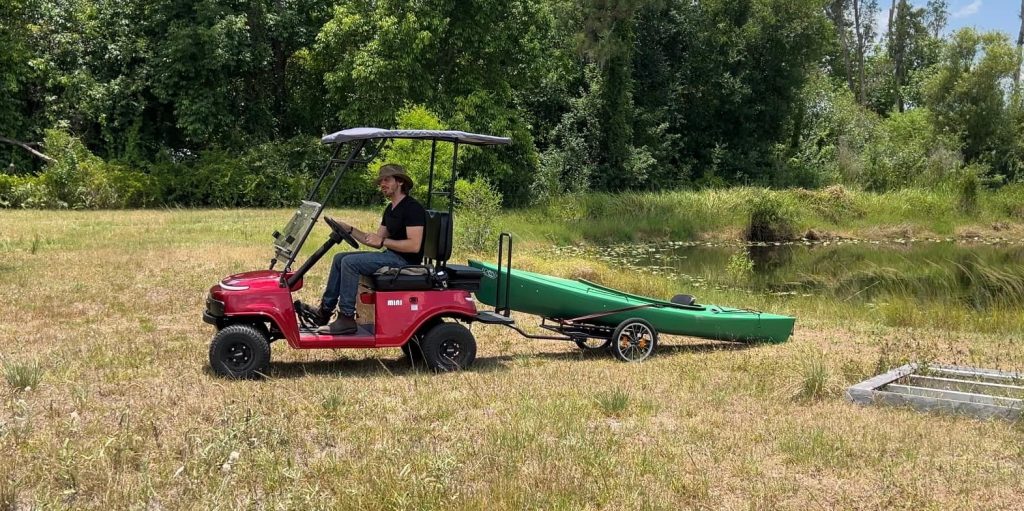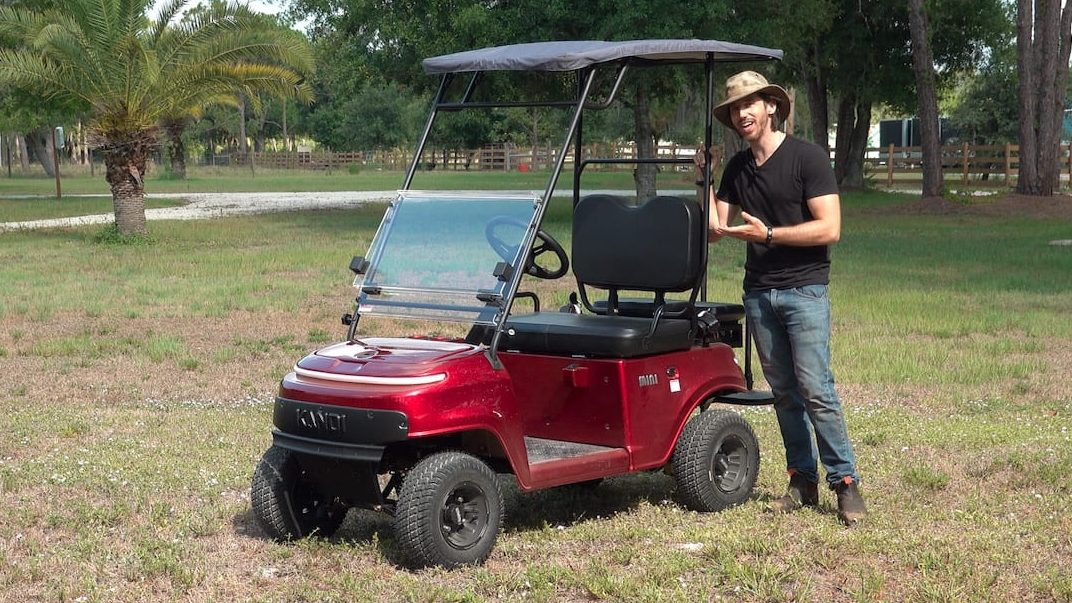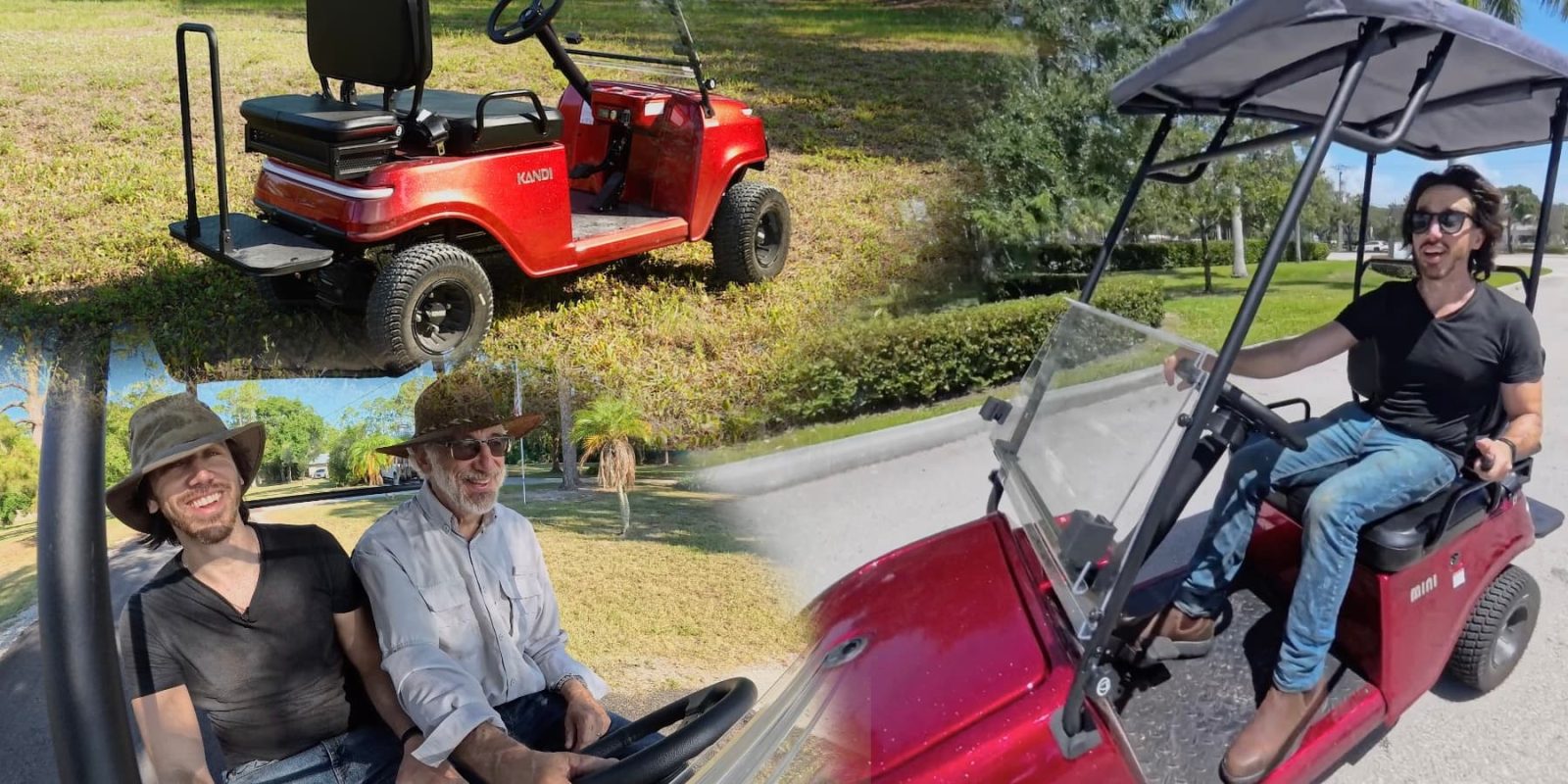
The Kandi Mini is unlike any other golf cart in the world in two key ways. First, it’s less than half the price of your average golf cart. And second, it’s a lot more compact than your average golf cart.
Both of these are key features for folks who have become golf cart curious but don’t have the space in their garages or their wallets for a new full-size cart.
I’ve written before about how useful golf carts have become as alternative transportation. As much as I love a good electric bicycle, a golf cart can usually carry more people and cargo, offers better weather protection, and is a more comfortable feeling for many riders. The only problem is they generally cost an arm and a leg, usually starting in the low five figures.
Don’t believe me? You obviously haven’t checked out new golf cart prices lately. $10,000 for a fairly basic golf cart is pretty standard these days, and it’s easy to get into the $12-$15k range when you start looking at lifted carts with bigger wheels and fancier features.
Enter the Kandi Mini: a $3,999 electric golf cart (or $3,499, depending on where you get it) that is small enough not to take up too much space in your garage. In fact, it’s got a neat feature that allows it to collapse down into an even smaller size. You can see it in detail in a fun unboxing and testing video I made here.
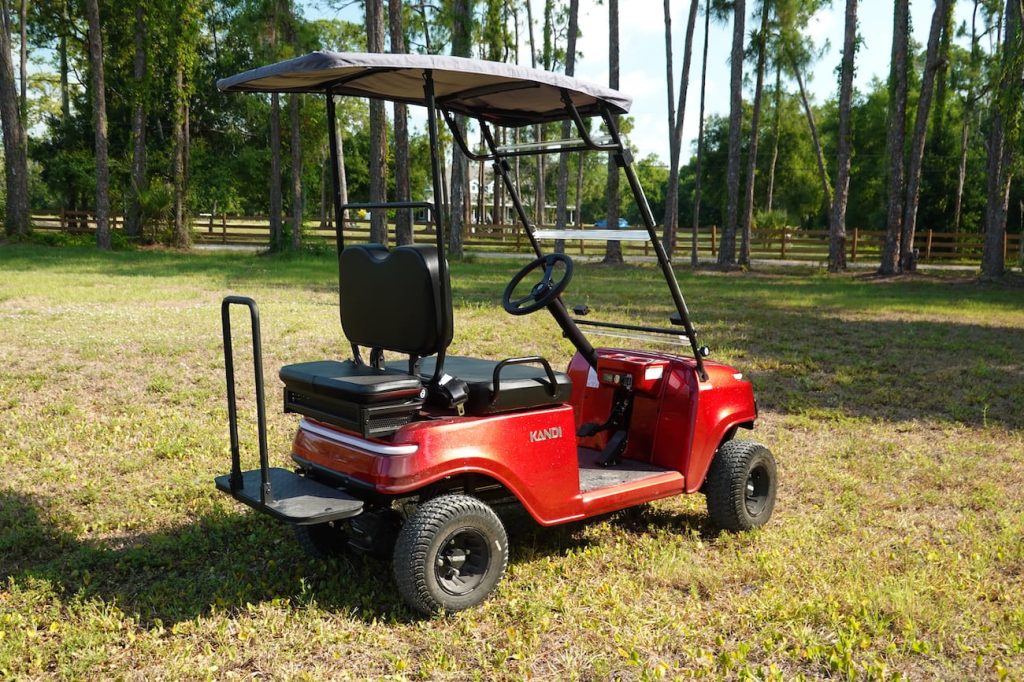
Fully extended, the cart is 96 inches (8 feet or 2.43 meters) in length, including the foot platform in the rear. When you push the dashboard switch to collapse it, the front end of the cart sucks itself in. Add in the folding rear platform, and the cart drops to just 66 inches (5’6″ or 1.68 meters) long.
I installed the optional roof canopy and windshield onto my Kandi Mini, though these are accessories that don’t come standard. The roof canopy comes off with quick releases and the entire canopy folds down to make the cart even shorter. The quick-release knob on the canopy even has a built-in hex key that you can use to remove the steering wheel for even more collapsibility, so you don’t need to remember to bring your Allen wrench set.
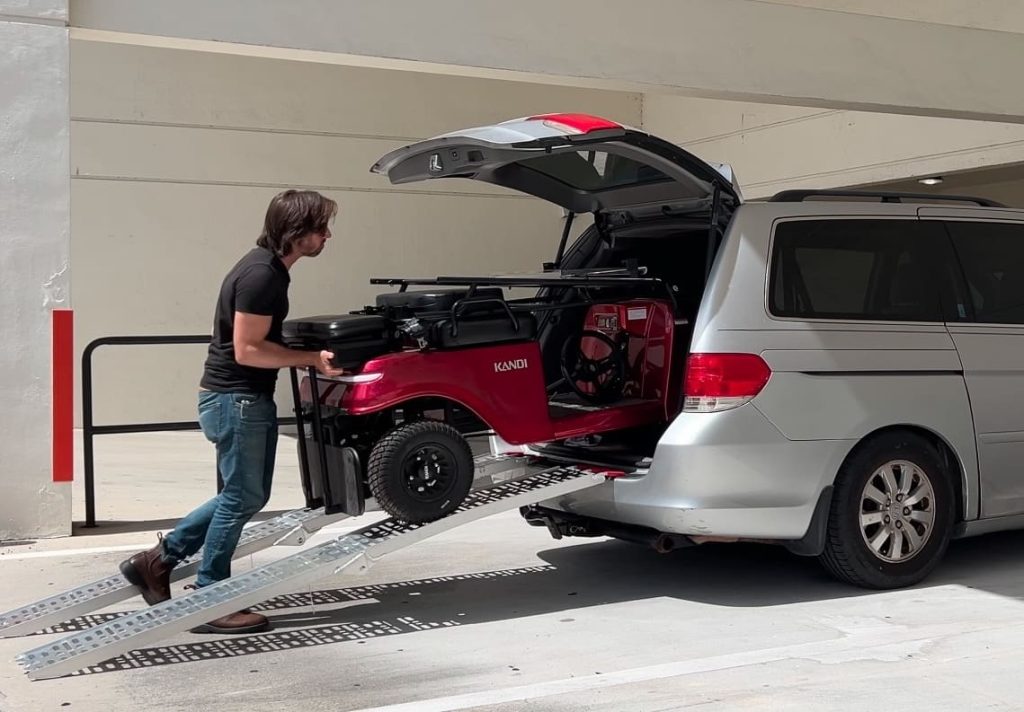
I was able to fit the cart in the back of my family’s minivan, which is a serious testament to just how compact it can become. As a side note, I didn’t even need to use the telescoping feature to make the cart even shorter; I just folded down the rear footrest. But if your van or SUV isn’t as spacious as this one, you can make the cart even shorter to fit tighter spaces.
As small as it is, the cart can still fit two adults side by side on the front bench, as my dad and I discovered while riding around together. The marketing seems to show a single adult in the front and a second adult in the rear, so it seems like they intend for this to be a two-seater.
But with a 400 lb weight limit, you could likely fit two healthy-sized adults and a child or two on the cart.
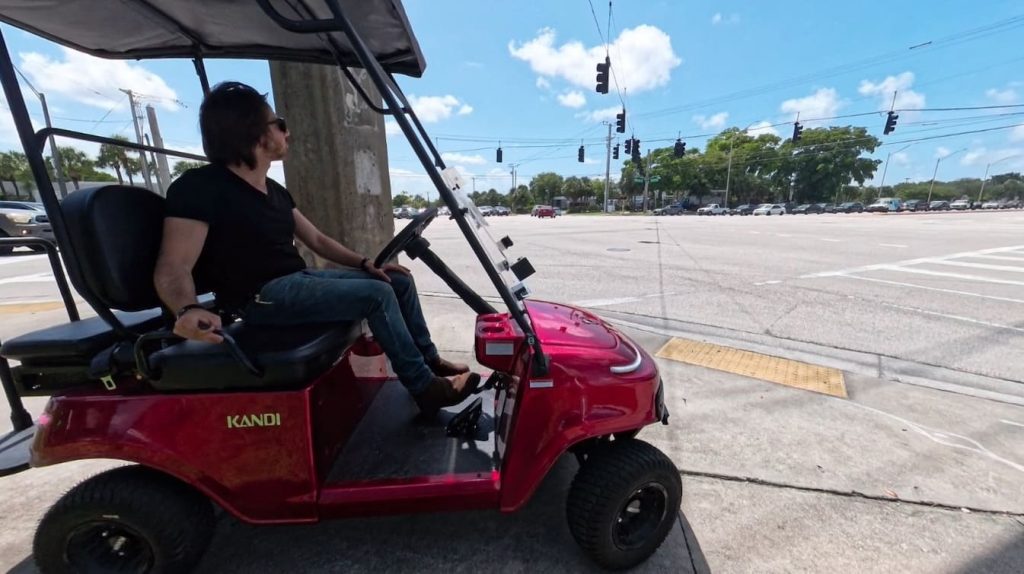

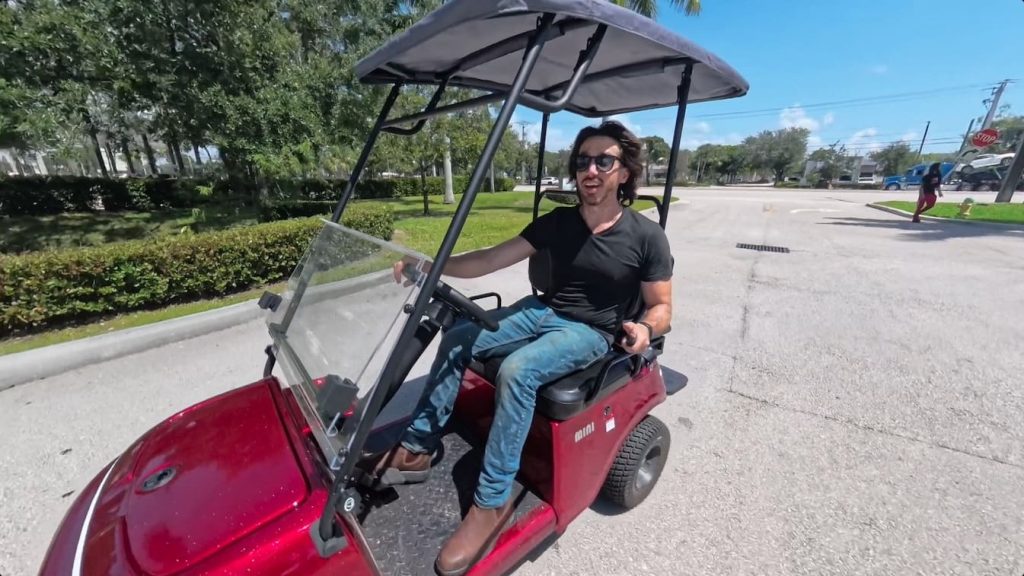
The controls are just about as simple as could be. There’s a gas pedal on the right and a brake pedal on the left, with a parking brake built into the top portion of the brake pedal.
There’s an On/Off switch on the center console (though I’m told this has been augmented on current models with a keyed switch for added security), and there’s also a battery meter alongside the switches for lights and collapsing/expansion of the frame.
I really like how that battery meter gives an actual percentage readout instead of just five LED dots like many cheaper battery displays offer. This gives you a better idea of your real battery capacity, though the 25-mile (40-km) range means few people will ever find themselves running the battery empty. I just can’t imagine riding this for 25 miles at a time.
Charging is also quite simple, with a small brick charger like those used for a laptop or e-bike, and that plugs into a 120VAC outlet.
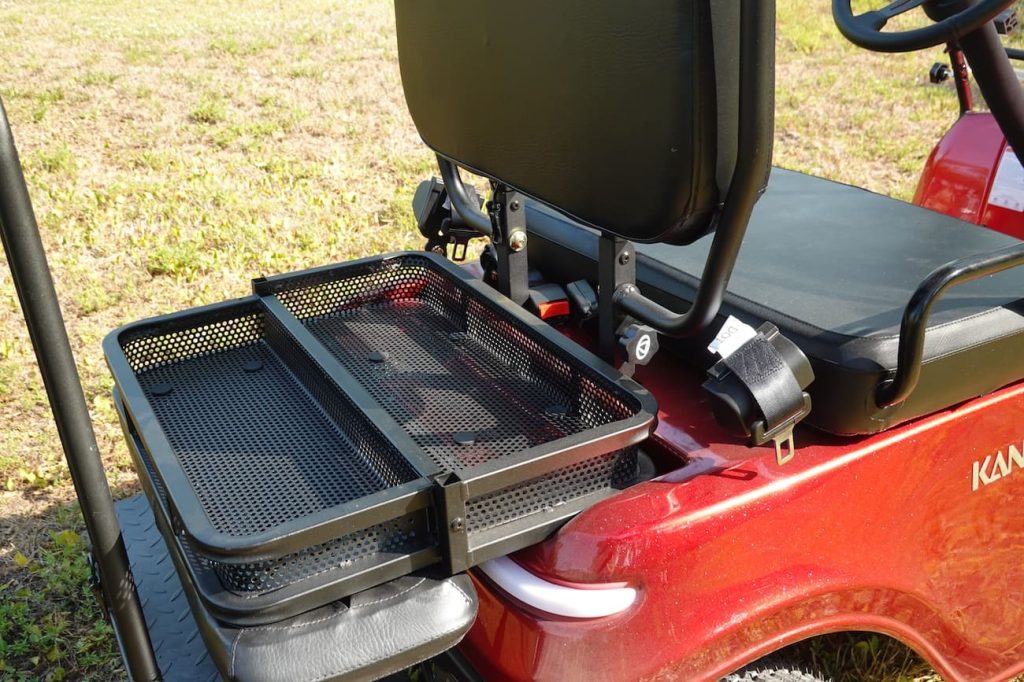
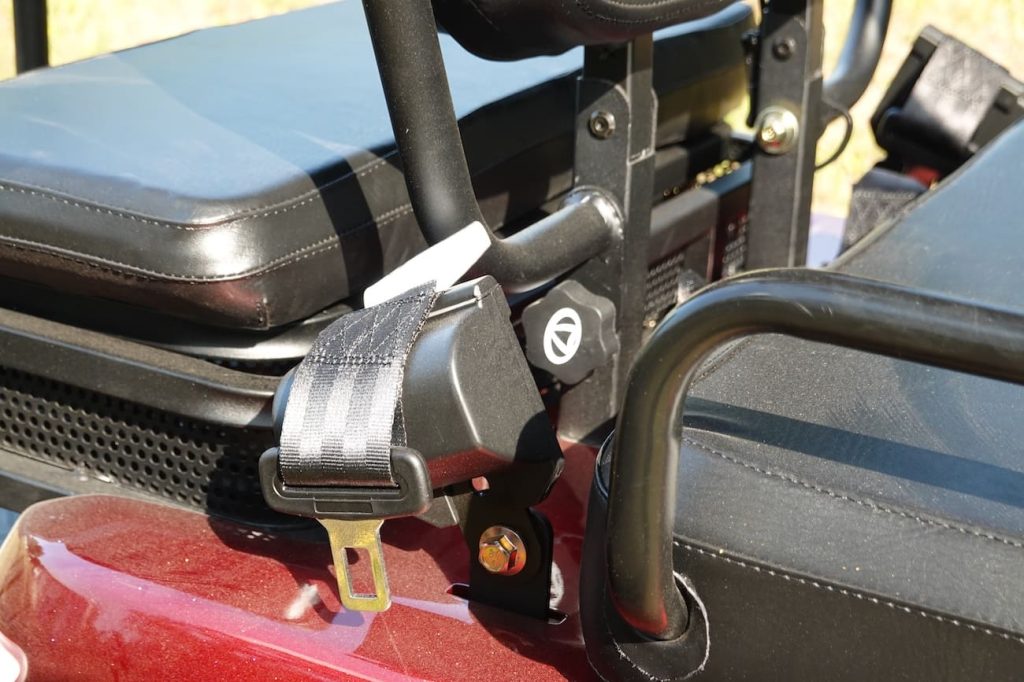
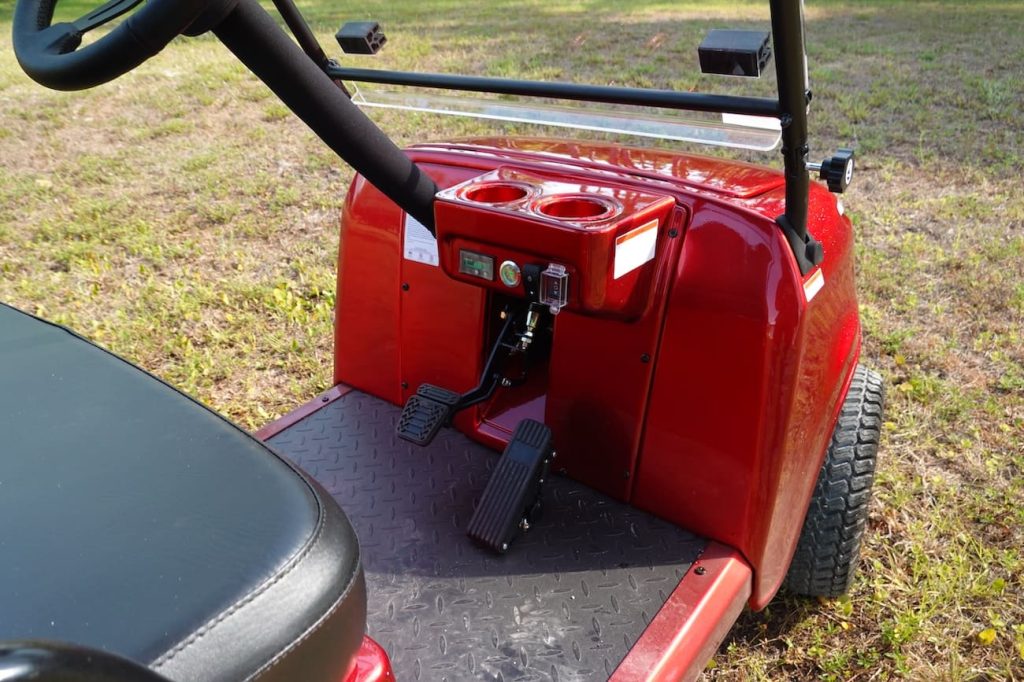
The only other control input is the gear shifter, which is mounted on the front of the underseat platform right between your knees. You can reach down to shift gears, such as when you’re backing out of a parking spot, and you don’t even need to search for a button on the center console since its the only switch in its place there behind your calves.
There are two retractable seatbelts, one each for the entire front and rear bench. They have a DOT label on them, and they feel robust like true automotive seat belts, though that doesn’t mean this is a street-legal LSV.
Still, the inclusion of high-quality seat belts is a nice addition, especially if you’ve got small kids that you don’t want hopping up mid-ride.

I tested the cart on all sorts of off-road terrain, from rough and sandy pasture grass to gravel roads, and it performed admirably. The front suspension uses a common independent double A-arm setup, while the rear is a straight axle on a swingarm. The shocks aren’t what I would call the highest end, but for $3,499, they’re quite good.
When I was back on paved roads and paths, the suspension was a non-issue and felt great. When I was riding around on bumpy off-road areas, I definitely bumped around a bit with the terrain, but the suspension performed pretty decently for what it is. It’s definitely not a high-end UTV, but it’s also not some cheap little buggy. It’s modest suspension that works pretty well on most terrain.
There’s around six inches (15 cm) of ground clearance, which is more than I would have expected from such a small golf cart. I took this thing far beyond where the roads ended, and I never once had a problem with it while off-roading. In fact, I was able to drive down into ditches and back out the other side, repeatedly. That doesn’t mean you can’t high-center it on a downed telephone pole, but every ride has its limit, and you probably shouldn’t be trying to traverse telephone poles on a mini golf cart.
The power also surprised me. It’s not that it’s particularly punchy, but rather that I had expected a tortoise situation based on the 1,000W power rating for the spec sheet. I was pleasantly surprised to find that when I stepped on the accelerator pedal, the cart didn’t protest. It’s not a powerhouse, but it doesn’t feel underpowered, either. I climbed up grassy embankments and never felt like I was getting bogged down. And not that it’s a particularly gargantuan feat of strength, but I even towed around my kayak to bring it to our local lake on a small trailer.
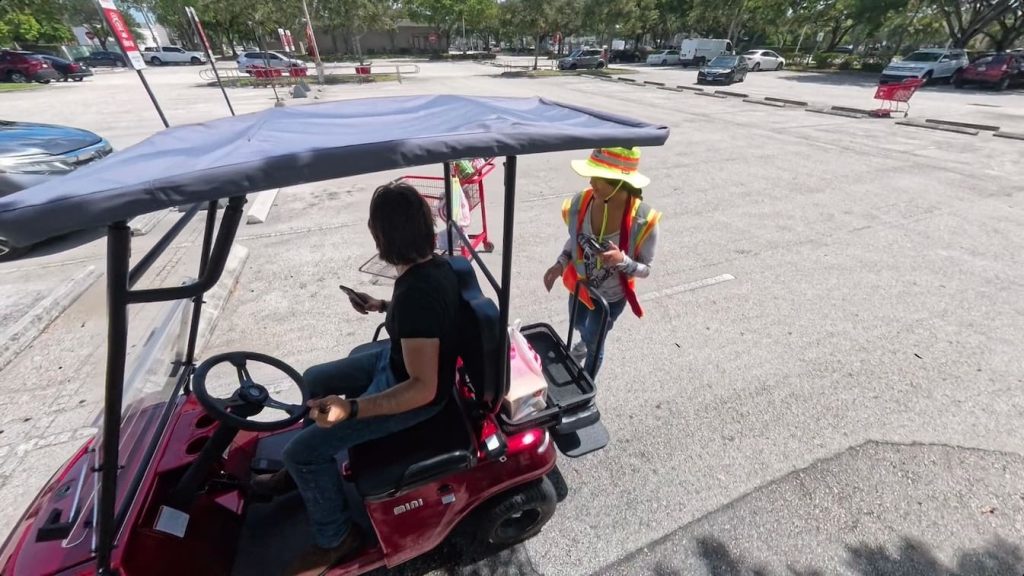
While the cart didn’t feel underpowered, it did feel a bit slow. The top speed is listed as just 9 mph, and it didn’t feel like it was going much more than 10 mph (16 km/h). I did take it on some local lightly trafficked roads (it’s not street legal but this testing was in Florida where a golf cart might as well be on the state flag), and it felt a bit strange to go that slow on the road, even with barely a car in sight. This cart is definitely better situated on cart paths, trails, and other multi-use pathways.
That slow speed didn’t really limit me from using it like a real urban golf cart, though. I took it shopping, made runs to Target and Walgreens, and used it all around my parents’ ranch and my family’s suburban neighborhood, and it performed admirably in each situation.
Some of the impressive features that I was surprised to see on such a small and affordably-priced golf cart included the pretty darn spacious frunk for front storage, aluminum wheels (normally a paid upgrade over steel wheels on many vehicles), a lithium iron phosphate battery (1.8 kWh) with a 3-year warranty, hydraulic disc brakes, the rear seat flips down into a small cargo bed, the cart comes with automotive-style metal flake paint, and there are a bunch of colors to choose from.
Some of the improvements I’d love to see would be a higher top speed, and perhaps a bigger battery to go with that speed. As it stands, the existing battery is plenty since the low top speed makes this an ultra-efficient cart. The 25-mile (40-km) range sounds like more than I’ll ever need for around-the-neighborhood trips. But if they could make the cart go faster, even up to 15 mph (25 km/h), then a slightly bigger battery would be nice since the range would take a hit.
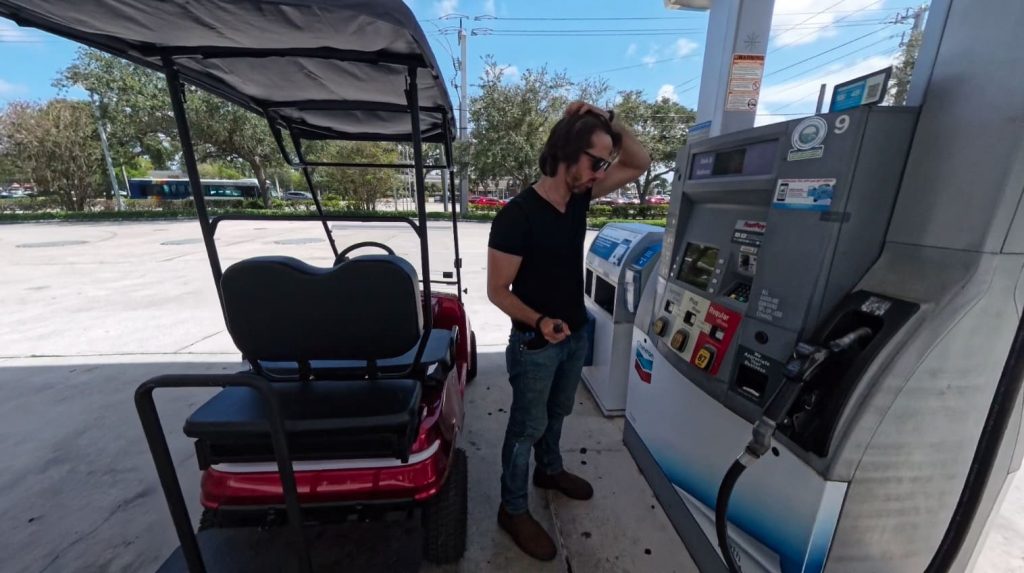
But that also speaks to the value here. We could click our heels and wish for more speed and bigger batteries all day, but if that was somehow granted, then we’d have to reach deeper into our pockets, too.
They’re able to offer a well-made electric golf cart at a third of the price of the big boys precisely because it doesn’t come with super fast speeds or massive batteries.
Instead, it offers us modest performance that allows riders to save some serious cash. If you need more speed and power, Kandi has bigger golf carts (and they still cost less than the competition).
But for the people out there who don’t need to go 20-25 mph because they’re only cruising the neighborhood or the campsite, this is likely plenty of cart for them.


